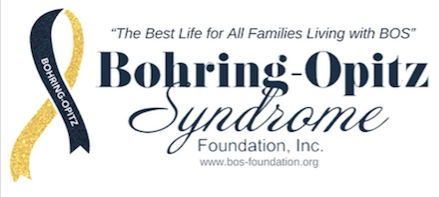BOS Registry Q&A
Q1. Why are there multiple names for Bohring-Opitz Syndrome in the diagnosis field?
A1. CoRDS uses a database called Orphanet to code and map all of the rare diseases. Orphanet gets the synonyms for the diseases through worldwide publications. CoRDS will map anyone who has designated Bohring Opitz Syndrome and the synonyms listed by Orphanet as their diagnosis to the BOS Foundation’s permissions and data sharing question.
So bottom line - those names are just different names for BOS that have previously been used in literature to describe the syndrome. Selecting any of those will cause CoRDS to ask about sharing data with the BOS Foundation.
Q2. How do interested BOS researchers know that there’s a registry at CoRDS?
A2. Researchers will learn of the BOS Patient Registry at CoRDS through the combined efforts of the BOS Foundation, CoRDS Team and You. The use of social media, our Medical Advisory Board, and spreading awareness throughout the community at conferences and meetings will help researchers become aware of the CoRDS registry.
Q3. Is there a medical professional that’s working closely with us on this registry?
A3. Yes. Members of the BOS Foundation's Medical Advisory Board are working closely on the registry. In particular they will be instrumental in the creation of any disease specific questionnaires added at a later date.
If you have additional questions please email sandy@bos-foundation.org.
